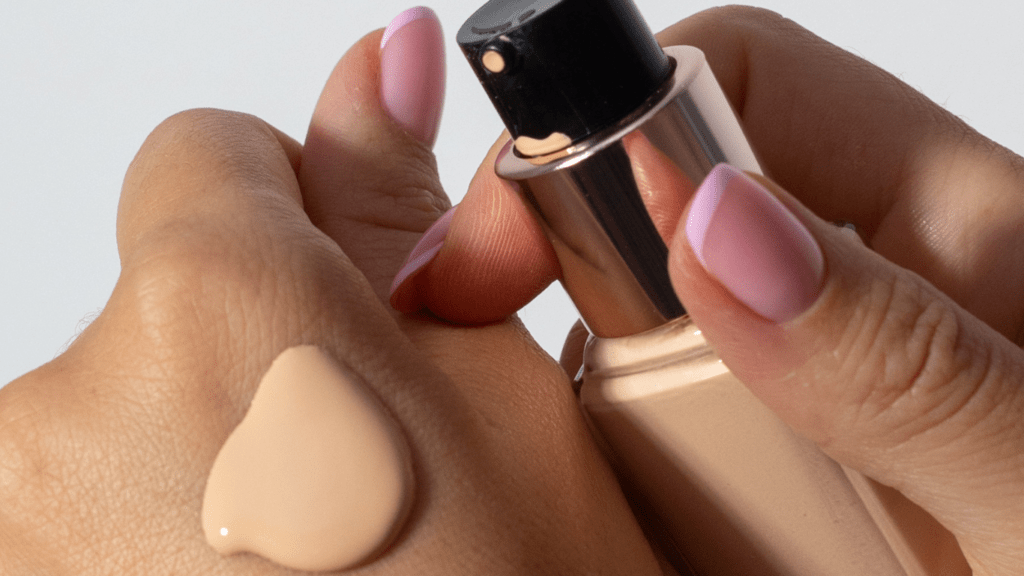Understanding Your Skin Type
Knowing your skin type is crucial for achieving a flawless foundation finish. Skin types can be classified into five categories: oily, dry, combination, sensitive, and normal. Each type requires specific products and preparation methods.
Oily Skin
If you have oily skin, shine and enlarged pores might be common concerns. Use a mattifying primer and an oil-free foundation for better results. Long-wear formulas reduce the need for touch-ups throughout the day. Set your foundation with a translucent powder to control excess oil.
Dry Skin
Dry skin lacks moisture, often resulting in flakiness and tightness. Hydrate your skin with a rich moisturizer and use a hydrating primer. Choose a dewy or luminous foundation to give your skin a healthy glow. Avoid matte foundations as they can accentuate dryness.
Combination Skin
Combination skin has both oily and dry areas. Typically, the T-zone is oily while the cheeks are dry. Balancing these areas is key. Use a lightweight, non-comedogenic moisturizer and a primer that suits both skin conditions. Opt for a natural-finish foundation to address the diverse needs of your skin.
Sensitive Skin
Sensitive skin can react to certain products, causing redness or irritation. Look for products labeled hypoallergenic and fragrance-free. A soothing primer with calming ingredients helps prepare your skin. Use a foundation with minimal ingredients and a lightweight texture.
Normal Skin
Normal skin is generally balanced with no major concerns. You can use a variety of products, but it’s still important to maintain a good skincare routine. A lightweight primer and a medium-coverage foundation typically provide a smooth and natural finish. Experiment to find the best fit for your skin.
By identifying your skin type and choosing the right products, you can enhance the smoothness and longevity of your foundation.
Prepping Your Skin
Prepping the skin is the cornerstone for a flawless foundation. With a few essential steps, you can ensure a smooth, long-lasting finish.
Cleansing
Cleansing removes dirt, oil, and impurities for a fresh canvas. I recommend using a gentle, sulfate-free cleanser that matches your skin type. For oily skin, choose a foaming cleanser, and for dry skin, a hydrating cream cleanser is best. Cleansing twice a day keeps pores clear and primes skin for makeup.
Moisturizing
Moisturizing creates a smooth surface for foundation application. Use a lightweight, non-comedogenic moisturizer for oily skin to avoid clogging pores. For dry skin, a heavier, cream-based moisturizer offers maximum hydration. Apply moisturizer in upward strokes to promote circulation and ensure even distribution.
Priming
Priming is crucial for foundation longevity and smoothness. Select a primer based on your skin’s needs: mattifying for oily skin, hydrating for dry skin, and color-correcting for uneven tones. Apply a thin layer, focusing on areas with pronounced texture or enlarged pores. A well-chosen primer can blur imperfections and enhance foundation adherence.
Choosing the Right Foundation

Selecting the right foundation is crucial for achieving a flawless, smooth finish. I’ll explain the different types and how to match shades to your skin.
Types of Foundation
Foundations come in several forms to suit different skin needs:
- Liquid Foundation: This type is versatile and offers varying coverage levels. Ideal for most skin types, it’s especially good for dry and combination skin because it blends easily.
- Powder Foundation: Best for oily and combination skin, powder foundation controls shine and provides a matte finish. It’s also convenient for touch-ups.
- Cream Foundation: Offering full coverage, cream foundation is perfect for dry or mature skin. It hydrates while covering imperfections.
- Stick Foundation: This type is excellent for on-the-go application. It’s suitable for normal to oily skin and provides good coverage.
- Mineral Foundation: With natural ingredients, mineral foundation is suitable for sensitive and acne-prone skin. It delivers a lightweight finish.
Matching Shades
Matching your foundation shade to your skin tone is key for a seamless look:
- Identify Your Undertone: Check your veins; blue indicates cool undertone, green means warm, and a mix suggests neutral.
- Test Several Shades: Apply three shades close to your jawline. The one that disappears into your skin is the correct shade.
- Consider Seasonal Changes: Your skin tone can vary with the seasons, so you may need different shades for summer and winter.
Choosing the right foundation involves understanding your skin type and tone and selecting a formula that complements both.
Application Techniques
Mastering application techniques is key to achieving a smooth finish with foundation. Proper tools, coupled with effective blending methods, ensure an even and natural look.
Tools and Brushes
Using the right tools impacts how foundation applies and looks on the skin. I recommend using a variety of brushes and sponges to suit different products and areas of the face.
- Foundation Brush: Flat or stippling brushes help apply liquid foundation evenly. Choose a synthetic brush for smooth application.
- Beauty Sponge: Damp sponges blend liquid and cream foundations seamlessly. Use a tapping motion for an airbrushed finish.
- Buffing Brush: Dense, rounded brushes work well with powder foundations. Buff the product in circular motions for a flawless look.
- Detail Brushes: Smaller, precise brushes are ideal for areas around the nose and under the eyes. They ensure even coverage in hard-to-reach spots.
Blending Methods
Blending techniques determine the smoothness and evenness of the foundation. I’ll detail a few methods to enhance the application.
- Stippling: Use a stippling brush or beauty sponge to gently dab the foundation onto the skin. This method prevents streaks and creates a lightweight appearance.
- Swirling: A circular buffing motion works best with powder foundations. This technique enables even coverage and blends the product seamlessly into the skin.
- Sweeping: For liquid foundations, use a foundation brush to sweep the product in downward strokes, mimicking the direction of hair growth. This reduces the appearance of fine lines and facial hair.
- Patting: Patting the foundation with a damp beauty sponge ensures an even, hydrated finish. This method works particularly well for dry or sensitive skin.
By using the right tools and blending techniques, anyone can achieve a smooth, natural-looking foundation application.
Setting Your Foundation
Setting your foundation ensures it stays in place all day. Two main methods include powders and sprays.
Powders
Powders lock in foundation, minimizing shine and enhancing longevity. I recommend setting powders for most skin types, while pressed powders work well for touch-ups. Choose a translucent powder if you want a natural finish or a tinted powder to add coverage. Use a fluffy brush to dust powder over the face, focusing on areas prone to oiliness, such as the T-zone for oily skin or the whole face for combination to oily.
Sprays
Setting sprays offer a lightweight alternative to powders. They keep foundation intact without a matte finish. I suggest sprays for those with dry or combination skin seeking a more natural, dewy look. Hold the spray at arm’s length, misting in an “X” and “T” pattern to cover the face evenly. For best results, select sprays with hydrating properties for dry skin or mattifying agents for oily skin.
Common Mistakes to Avoid
Applying foundation can sometimes be tricky. Knowing what not to do can be just as important as mastering the techniques themselves.
Overapplication
Applying too much foundation is a common error that can make the skin look cakey and unnatural. When using liquid foundation, one pump usually suffices. For powder, a light dusting will do. Focus on building coverage gradually to avoid overloading the skin. This method ensures a more natural finish and prevents product buildup, which can highlight fine lines and imperfections.
Skipping Steps
Skipping crucial steps in skin preparation and foundation application undermines the final look. Cleansing and moisturizing create a smooth canvas for makeup. Neglecting primer means the foundation won’t adhere as well or last as long. Each step, from cleansing and moisturizing to priming, plays a role in achieving a flawless finish. Skipping them compromises the look and longevity of your foundation.



